Did you know that the large, bat-like ears of an Oriental Shorthair cat aren’t just for show—they’re a dirt magnet too? While these impressive auditory appendages can pick up even the faintest of high-frequency noises, they also tend to collect a lot of dirt. So, how do you keep your Oriental Shorthair’s ears clean and healthy?
Christina Scamporrino, a seasoned professional in the pet care space, emphasizes that maintaining ear hygiene for Oriental Shorthair cats is crucial. Their unique ear structure necessitates regular, gentle cleaning using a damp cloth, steering clear of invasive tools like Q-tips. Additionally, just as their sleek, short coat benefits from a monthly combing and a soft cloth wipe, their ear grooming requires diligent attention.
Key Takeaways
- Oriental Shorthair Cat ear care is essential due to their large, dirt-prone ears.
- Avoid using invasive objects like Q-tips for ear cleaning.
- Regular ear hygiene for Oriental Shorthair cats helps prevent the buildup of dirt and wax.
- Gentle cleaning with a damp cloth is recommended for ear grooming for Oriental Shorthair cats.
- Monthly grooming of their silky, short hair complements their ear care routine.
Understanding the Unique Ears of Oriental Shorthairs
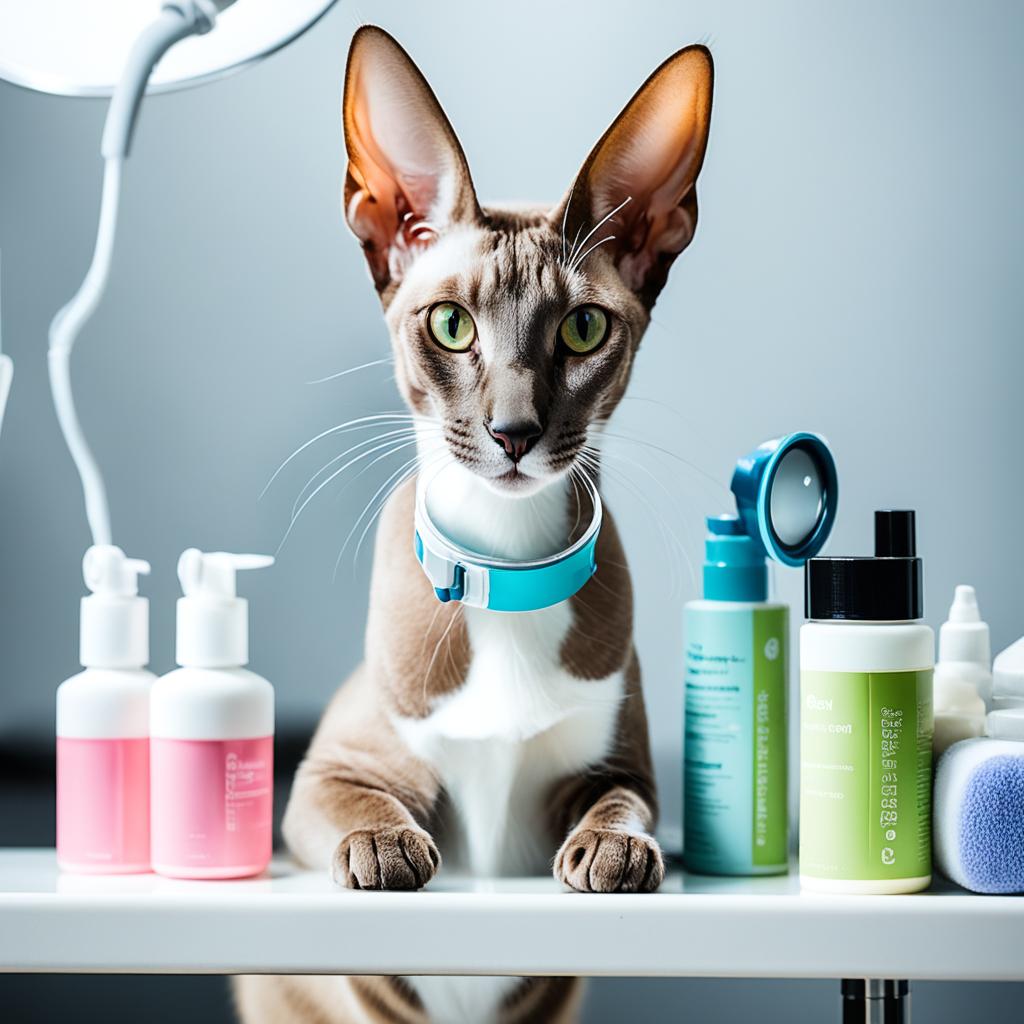
Oriental Shorthair cats are graced with exceptional ears that are not just aesthetically striking, but they also offer remarkable auditory abilities. With these large, upright ears, your feline friend can pick up sounds at higher frequencies, enhancing their alertness and sensory experience. Keeping Oriental Shorthair cat ears healthy is essential for maintaining their sharp hearing and overall well-being.
Due to their prominent size, Oriental Shorthair ears can accumulate dirt more easily compared to other breeds. This makes it even more important to focus on how to care for an Oriental Shorthair cat’s ears correctly. Regular cleaning and inspection can help in preventing any potential problems and ensuring their continued health.
Expert recommendations for keeping Oriental Shorthair cat ears healthy emphasize gentle cleaning techniques. Use a damp cloth to wipe away any visible dirt, being careful to avoid inserting objects into the ear canal. This approach not only keeps the ears clean but also avoids any potential damage to the sensitive interior structures.
Remember, how to care for an Oriental Shorthair cat’s ears involves a meticulous approach—monitoring for any signs of dirt buildup, infections, or other issues. By doing so, you safeguard their extraordinary hearing capabilities and contribute to their overall happiness and health.
Why Oriental Shorthair Ear Hygiene is Crucial
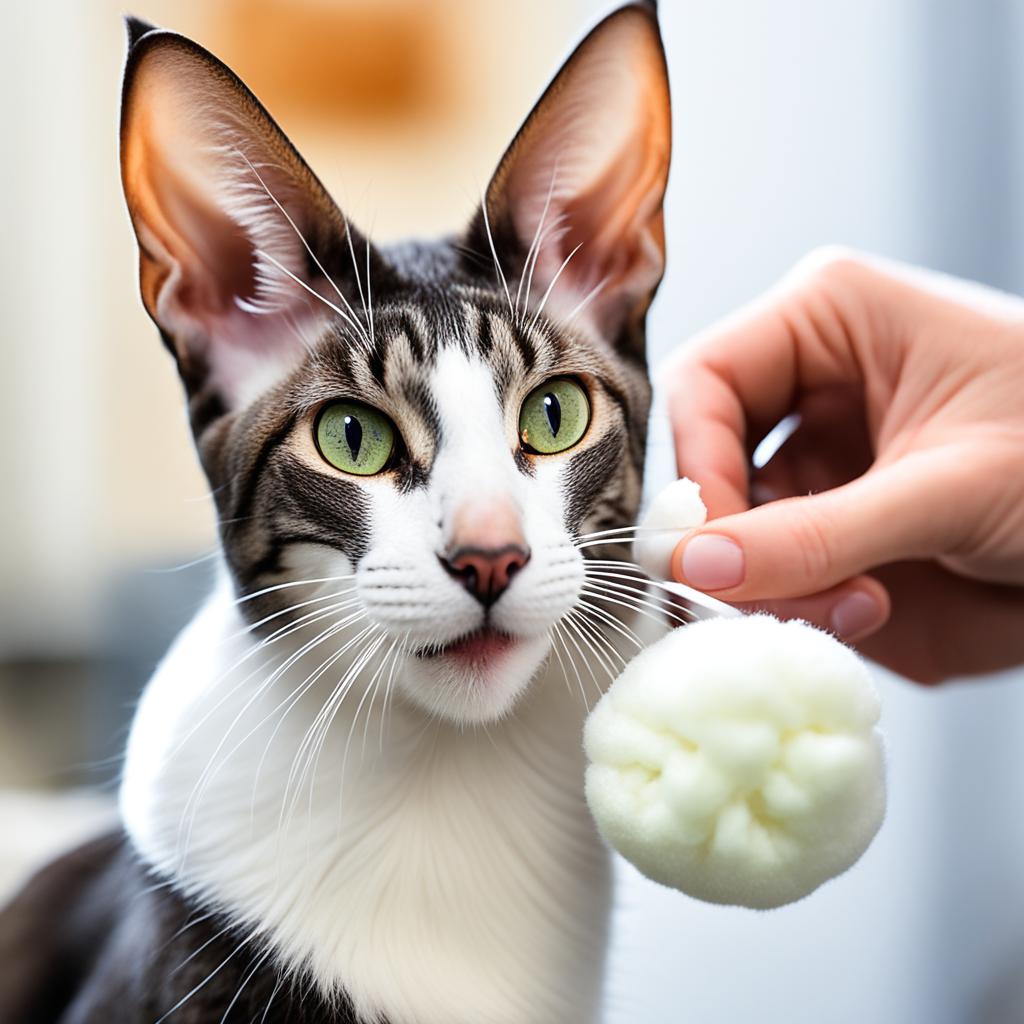
Ensuring proper ear hygiene for your Oriental Shorthair can make a big difference in their overall health and happiness. These cats’ exquisite ears, while stunning, are more susceptible to issues like mites and infections when not given the right care. Applying the right cat ear cleaning tips can prevent complications down the road.
Preventing Common Ear Issues
One of the best cat ear cleaning tips is to be proactive with regular maintenance. Consistent cleaning can keep wax and debris at bay, which helps prevent common problems such as ear mites. Trust us, your feline friend will thank you for sparing them from the discomfort and irritation.
Avoiding Infections and Infestations
Infections and infestations are not just unpleasant—they can also be costly. Utilizing the right cat ear cleaning tips can help you avoid these issues entirely. Make sure you’re removing excess wax and keeping their ears clean to deter parasites and bacteria that lead to more severe conditions.
How to Identify Ear Problems in Your Oriental Shorthair

Ensuring the health of your Oriental Shorthair’s ears is vital for their overall well-being. Regular inspections can help you spot issues early, preventing potential complications. Here’s a guide on what to look for:
Signs of Ear Mites
Ear mites are pesky creatures that can cause considerable discomfort for your cat. One telltale sign of ear mites is the presence of dark, coffee-ground-like specks in the ear. These specks are actually a combination of mite debris, wax, and blood. If you notice your cat scratching its ears frequently or shaking its head excessively, it’s possible they are dealing with these tiny invaders. Immediate action is crucial for how to care for an Oriental Shorthair cat’s ears effectively, as neglecting this issue can lead to more severe problems.
Detecting Ear Infections Early
Ear infections can sneak up on your feline friend, but early detection can make a world of difference. Keep an eye out for symptoms such as abnormal discharge, which may appear yellow or brown, and a foul odor emanating from the ears. Your cat might also display signs of discomfort, such as pawing at the ears or tilting its head to one side. Regular checks will help you catch these signs early on, ensuring you’re well-informed on how to care for an Oriental Shorthair cat’s ears.
Incorporating these checks into your grooming routine will not only keep your cat comfortable but will also ensure their ears stay in top-notch condition. Being diligent in how to care for an Oriental Shorthair cat’s ears can prevent minor irritations from becoming major health concerns.
How to Care for an Oriental Shorthair Cat’s Ears?
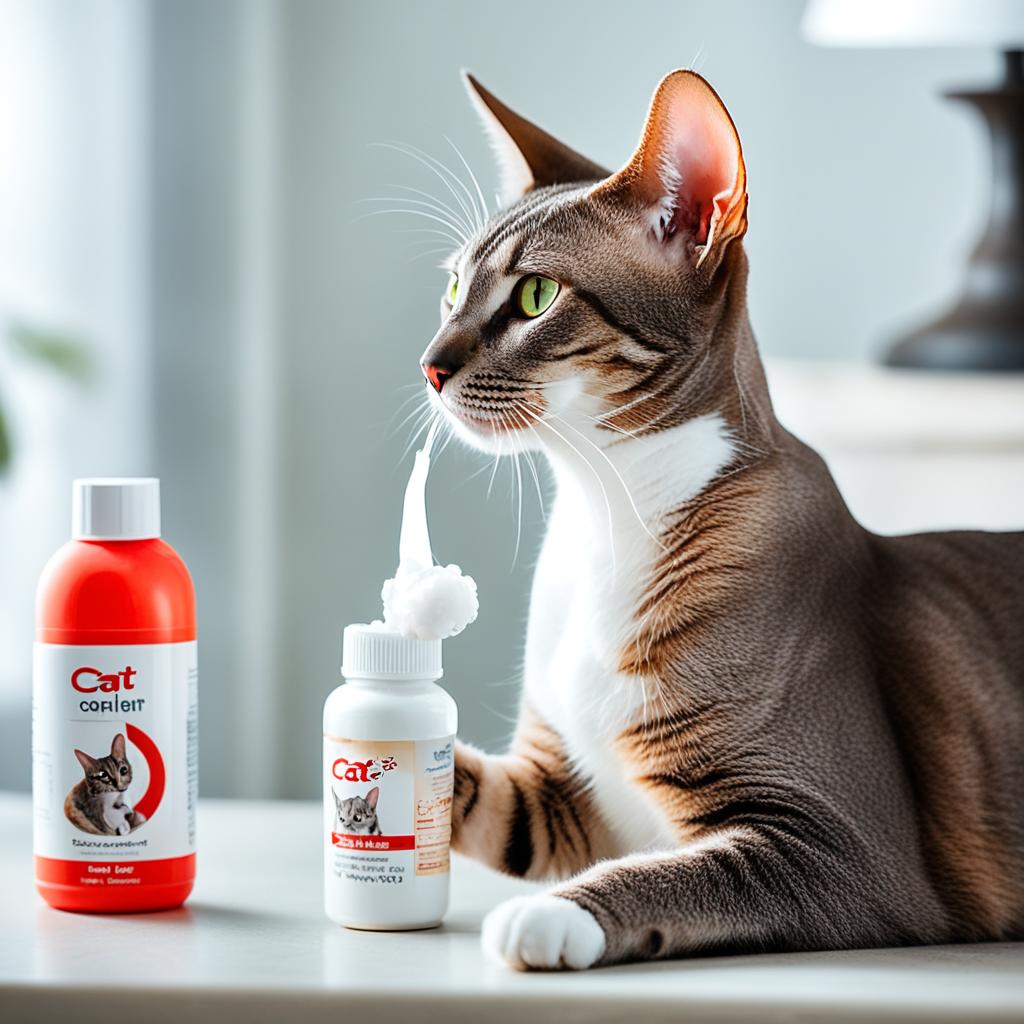
Caring for an Oriental Shorthair Cat’s ears is a crucial aspect of maintaining their overall health. Consistent ear care routines can help prevent potential health issues and keep their sensitive ears in optimal condition.
Cleaning Techniques
When it comes to cleaning, gentle techniques are key. Use a damp cotton ball or a soft cloth to gently wipe the outer part of the ears. Avoid using invasive instruments such as Q-tips, which can damage the sensitive ear canals of your Oriental Shorthair cat. Regular, gentle cleaning helps in the removal of dirt and potential irritants.
Best Tools for Ear Cleaning
Selecting the right tools for ear cleaning is essential. The best options include:
- Damp cotton balls
- Soft cloths
These tools ensure effective cleaning without posing harm to the delicate ear structures. Consistent use of these tools plays a significant role in upholding proper Oriental Shorthair Cat ear care.
Maintaining your feline friend’s ear health might seem straightforward, but it’s a task that requires your ongoing attention and diligence. Happy grooming!
Common Ear Problems and How to Address Them

Maintaining the health of your Oriental Shorthair’s ears involves being vigilant about common issues like ear mites, infections, and wax buildup. Here, we’ll dive into how to effectively address these concerns, ensuring you are keeping Oriental Shorthair cat ears healthy.
Ear Mites and Their Treatment
Ear mites can cause significant discomfort for your Oriental Shorthair. These tiny parasites, which resemble coffee grounds in your cat’s ears, require prompt treatment. Use veterinary-recommended topical treatments to eliminate the mites. Regular ear check-ups are pivotal for keeping Oriental Shorthair cat ears healthy.
Solutions for Ear Infections
Ear infections present another challenge. Symptoms to watch for include redness, inflammation, and an unusual odor. Consult your veterinarian immediately for prescribed antibiotics or antifungal treatments. Consistent monitoring and early intervention are key to keeping Oriental Shorthair cat ears healthy.
Dealing with Wax Buildup
Wax buildup can hinder your cat’s hearing and become a breeding ground for bacteria. Routine cleaning with a soft cloth or cotton ball helps manage wax levels. Ensuring a clean ear environment is essential for overall health, contributing to keeping Oriental Shorthair cat ears healthy.
| Common Issue | Symptoms | Treatment |
|---|---|---|
| Ear Mites | Black debris, itching | Topical medication |
| Ear Infections | Redness, foul odor | Antibiotics |
| Wax Buildup | Ear discharge, odor | Routine cleaning |
Preventive Measures for Keeping Oriental Shorthair Ears Healthy
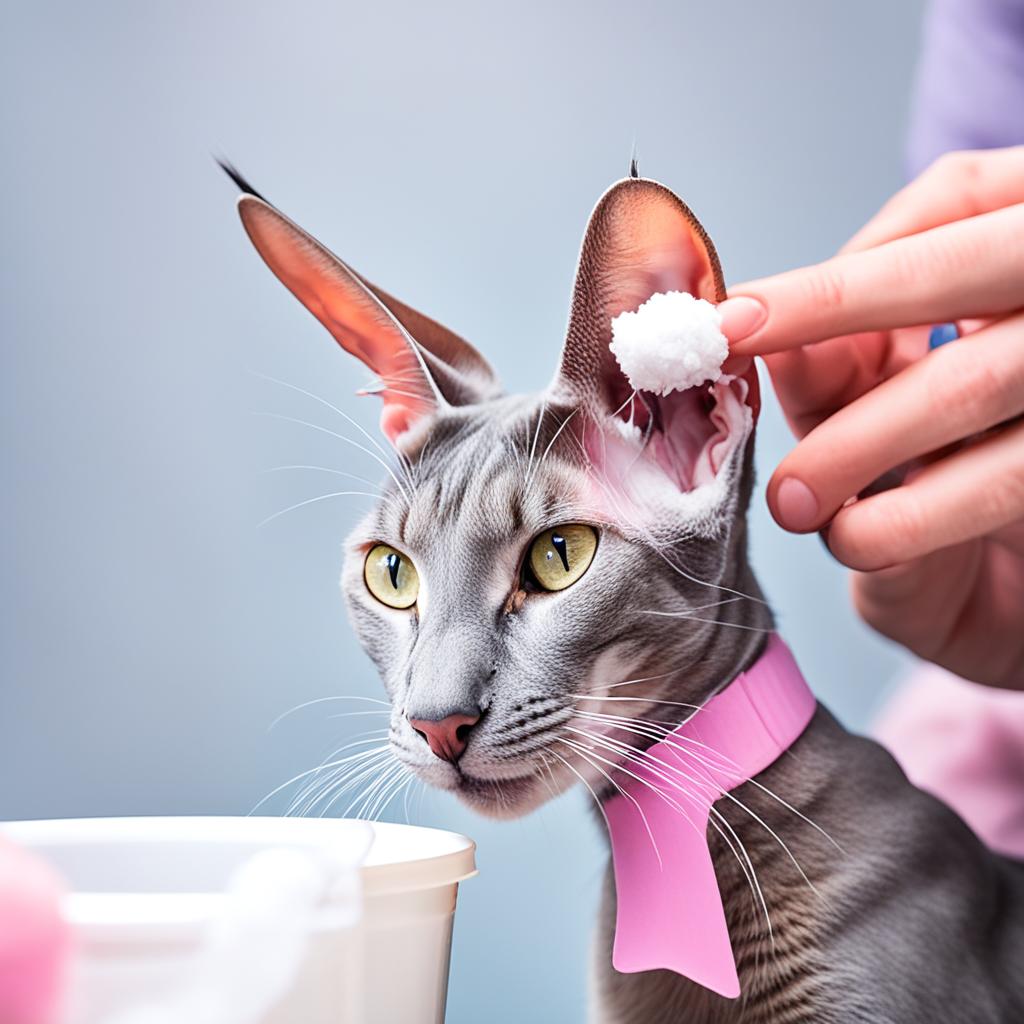
Maintaining ear hygiene for Oriental Shorthair cats involves several proactive steps that can spare your feline friend from discomfort. By setting up a regular grooming schedule, you can significantly mitigate potential ear issues. Vigilantly watching for signs of discomfort or abnormalities is key to early problem detection.
Here are some essential preventive measures:
- Regular Cleaning: Make ear cleaning a part of your weekly routine. Use a soft cloth to gently clean their ears, ensuring you remove any buildup.
- Addressing Discomfort Promptly: Pay attention to your cat’s behavior. If you notice frequent scratching or head shaking, it’s time to inspect their ears for any issues.
- Maintaining a Clean Environment: Keeping your cat’s living area clean helps in minimizing the risk of infections and infestations. Regularly clean bedding and surrounding areas.
By adhering to these preventive measures, you are well on your way to ensuring ear hygiene for Oriental Shorthair cats. These practices will help your Oriental Shorthair maintain a high quality of life, free from common ear problems.
Avoiding Common Mistakes in Ear Care
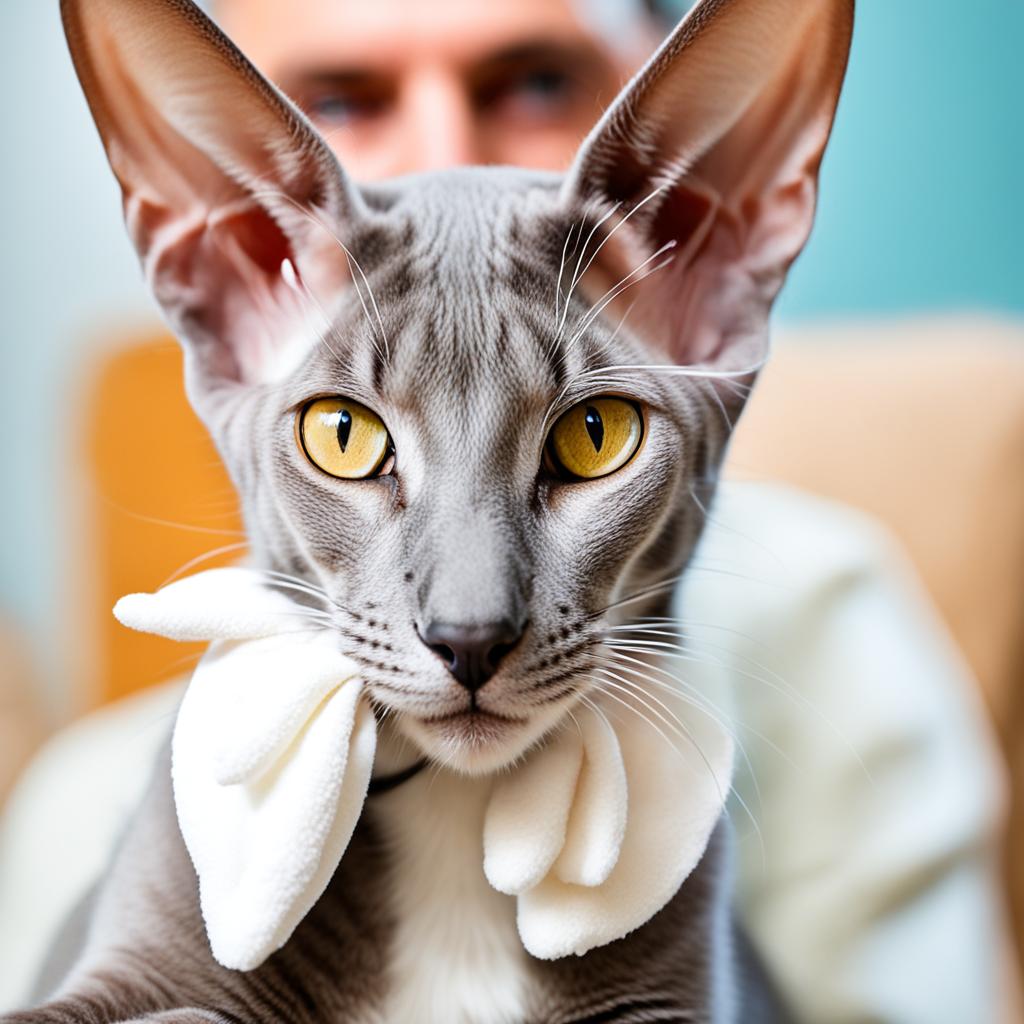
Ensuring the health of your Oriental Shorthair’s ears requires vigilant attention to detail and a commitment to avoiding common pitfalls. One major mistake to avoid is the introduction of foreign objects into the ear canal. You might think a Q-tip is handy, but it’s more likely to cause harm than help. Only use the softest tools, like a damp cotton ball, for effective cat ear cleaning tips.
Another common error is using harsh cleaning agents that can irritate the sensitive skin inside the ear. Opt for gentle, veterinarian-approved solutions rather than household items that aren’t specifically formulated for feline use. Your kitty’s ears are delicate, and the wrong substances can lead to irritation or even infection. Stick to expert-recommended products for all your cat ear cleaning tips.
Here are some quick do’s and don’ts to help guide you:
- Do use a damp cloth or cotton ball for cleaning.
- Do consult your vet for recommended cleaning solutions.
- Don’t insert objects into the ear canal.
- Don’t use unapproved cleaning agents.
By being mindful of these cat ear cleaning tips, you can ensure your Oriental Shorthair’s ears remain healthy and free from unnecessary risks. Attention and care in cleaning can go a long way in maintaining your feline friend’s well-being.
When to Consult a Veterinarian for Ear Problems
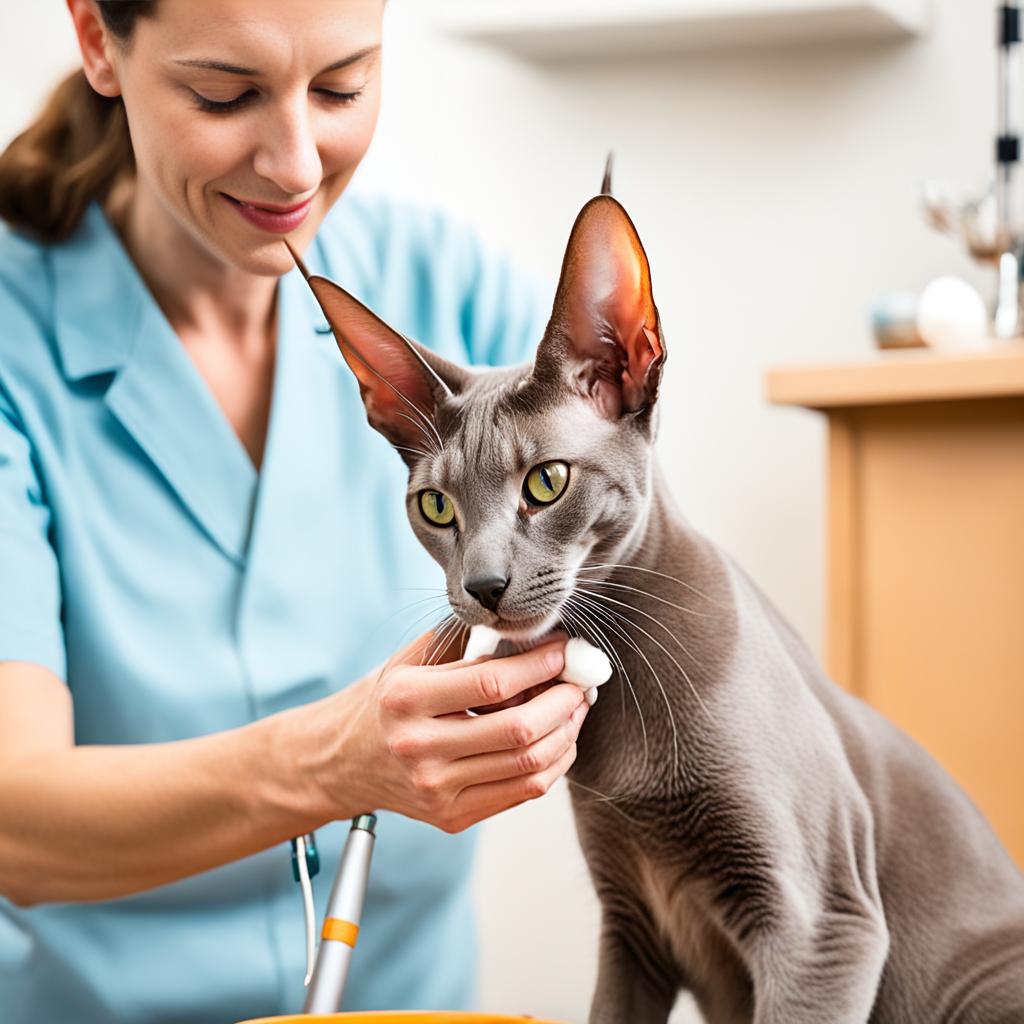
Maintaining sound ear grooming for Oriental Shorthair cats often requires occasional veterinary intervention. Certain symptoms are just too complex for home care, warranting the expertise of a professional.
Recognizing Severe Symptoms
Spotting severe symptoms early on can make a world of difference. If your cat exhibits significant discomfort, balance issues, or persistent infections, it’s a sign that something more serious may be afoot. These alarming symptoms are beyond regular ear grooming for Oriental Shorthair cats and necessitate veterinary attention.
Professional Cleaning and Treatments
When home remedies fall short, professional cleaning and treatments step in. Vets have specialized tools and medications tailored for advanced ear grooming for Oriental Shorthair cats. Whether it’s a deep clean to oust stubborn wax buildup or targeted treatments to combat infections, their expertise is vital. Don’t hesitate to consult your vet for customized treatment plans that cater specifically to your pet’s needs.
Conclusion
Understanding how to care for an Oriental Shorthair cat’s ears involves more than just routine cleaning; it’s about recognizing their unique needs and tailoring your approach accordingly. With those iconic, bat-like ears that pick up the faintest of sounds, it’s essential to keep them free of debris and ensure they remain in tip-top condition.
By implementing regular hygiene practices, such as using a damp cloth for gentle cleaning and avoiding invasive tools, you can significantly reduce the chances of ear issues. Addressing any abnormalities promptly ensures that minor concerns don’t escalate into major problems requiring extensive veterinary intervention.
Incorporating expert tips into your grooming routine will help you maintain your Oriental Shorthair’s ear health effectively. This not only supports your pet’s overall well-being but also enhances their long-term happiness. By staying vigilant and attentive to your feline’s ear care needs, you are fostering a healthier and more comfortable life for your cherished companion.




